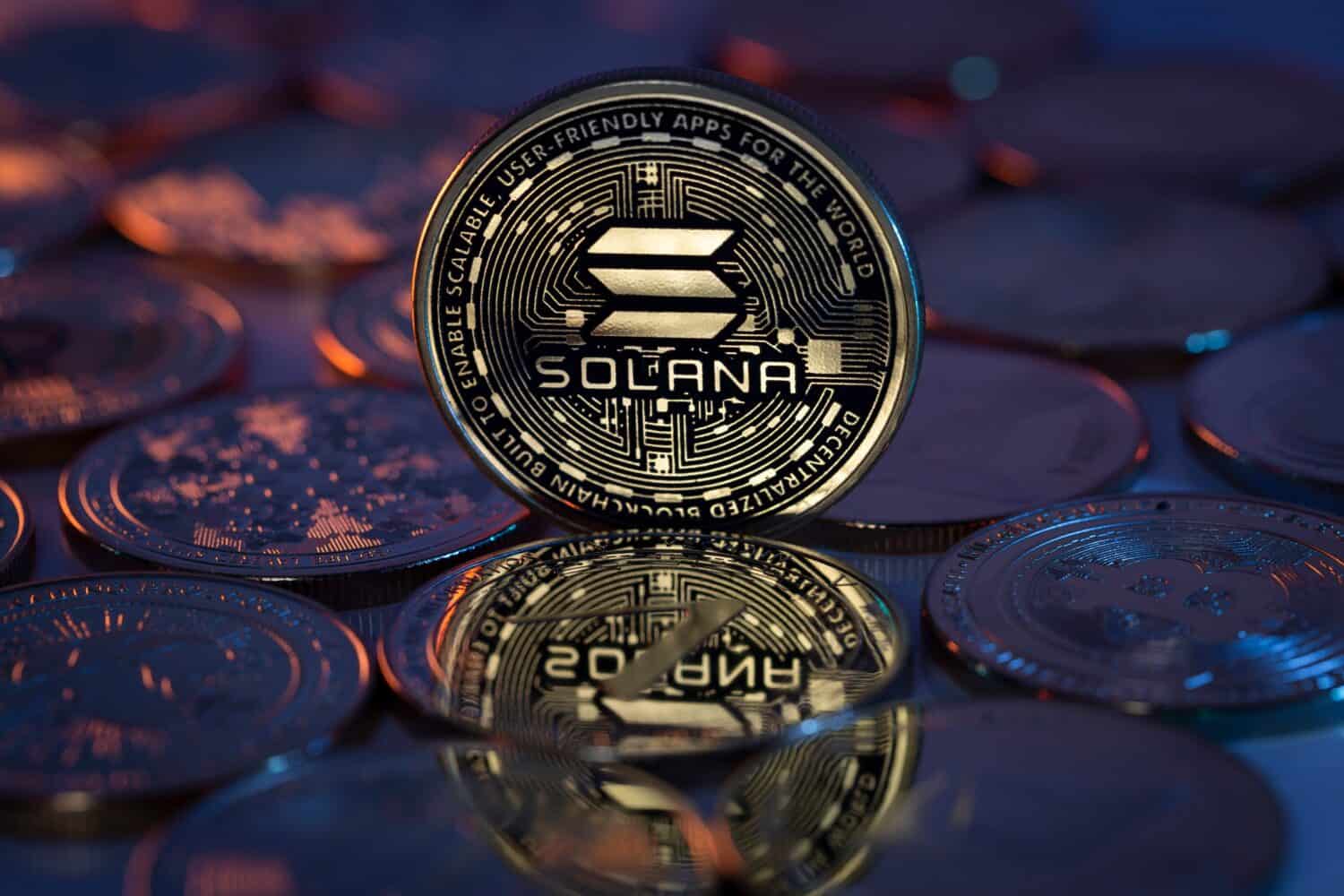Business
Solana ETFs Achieve 19 Consecutive Days of Inflows Amid Market Turmoil

Solana (SOL) exchange-traded funds (ETFs) have demonstrated remarkable resilience by achieving 19 consecutive days of inflows, totaling approximately $476 million since their launch on October 28, 2025. This trend stands in stark contrast to the broader market downturn that has seen significant outflows from Bitcoin and Ethereum products, highlighting a shift in investor sentiment towards Solana.
Investors have displayed a clear preference for Solana ETFs, particularly the Bitwise BSOL fund, which secured 89% of the inflows, amounting to $424 million. The fund’s strategy of staking 100% of its SOL holdings has provided investors with yield in addition to price exposure, a combination that has proven attractive in a challenging market environment. The low annual fee of 0.20% further enhances the fund’s appeal compared to its competitors.
Strong Inflows Amid Market Challenges
On November 21, Solana ETFs attracted an additional $23 million, while Bitcoin and Ethereum ETFs collectively lost over $1.6 billion in the same session. This influx of capital indicates that rather than fleeing from cryptocurrencies entirely, institutional investors are reallocating their resources towards Solana as a viable alternative.
Despite a notable decline in Solana’s price, which fell from $186 to about $141, investor confidence appears to be stabilizing. This sustained demand reflects an increasing appetite for SOL, even in the face of broader market volatility. The key question remains whether this momentum can continue or if Solana’s recent price struggles will ultimately impact the inflows.
Factors Driving Investor Interest
The success of Solana ETFs can be attributed to several factors. The design of Bitwise’s BSOL fund plays a crucial role; by staking all its SOL holdings, it provides investors with a source of yield alongside price exposure, which is particularly valuable when traditional yield sources are scarce.
Furthermore, the competitive 0.20% fee structure makes BSOL a compelling option for investors keen to minimize costs. Additionally, both Bitwise and Grayscale utilized an expedited 8-A filing process to launch their products, allowing them to capture early market demand before other issuers could enter.
Market conditions have also been conducive to this rotation towards Solana. The sell-off in November was primarily influenced by the Federal Reserve’s decision to curb expectations of interest rate cuts, resulting in rising bond yields and a stronger dollar. As volatility in the market intensified, institutional flows shifted dramatically, with Bitcoin ETFs experiencing significant redemptions.
In contrast, Solana funds continued to see inflows, suggesting that investors are opting for altcoins with staking-enhanced ETFs, which offer both yield and diversification—an attractive proposition not available with Bitcoin products.
The ongoing accumulation of assets within Solana funds is notable, as highlighted by Bloomberg ETF analyst Eric Balchunas, who noted that the funds have amassed approximately $2 billion in total assets, receiving capital consistently despite prevailing market fears. This trend indicates that large institutional investors are building positions in Solana, diverging from the cautious approach seen among retail traders.
Chief Investment Officer of Bitwise, Matt Hougan, remarked on the rapid accumulation of nearly $500 million within three weeks, positioning this launch among the most successful ETF introductions in history.
Long-Term Outlook for Solana
According to research from JPMorgan, the newly approved Solana and XRP funds could attract billions of dollars, potentially rivaling the early growth seen with Ethereum ETFs. The current inflows suggest that Solana’s ETF performance is indeed tracking alongside the initial success of Ethereum products, which is particularly significant given that SOL is a smaller asset in comparison.
Solana’s network continues to exhibit robust performance metrics, processing around 70 million transactions daily and achieving over $146 billion in monthly decentralized exchange volume. Despite the recent price decline, the network’s low transaction fees (approximately 0.000005 SOL per transaction) have remained constant, indicating strong underlying fundamentals.
Despite the substantial inflows, Solana has faced challenges, posting the weakest quarterly performance among the top five large-cap cryptocurrencies, with a decline of 26.5% in Q4 2025. This divergence between ETF accumulation and actual market performance underscores a strategic long-term investment approach among larger investors, who are focusing on transaction throughput, DeFi volume, and low fees instead of merely price fluctuations.
As the Solana ETF story unfolds, it remains a focal point for investors looking to capitalize on the potential long-term utility of the network amidst a volatile cryptocurrency market.
-

 Lifestyle4 months ago
Lifestyle4 months agoLibraries Challenge Rising E-Book Costs Amid Growing Demand
-

 Sports4 months ago
Sports4 months agoTyreek Hill Responds to Tua Tagovailoa’s Comments on Team Dynamics
-

 Sports4 months ago
Sports4 months agoLiverpool Secures Agreement to Sign Young Striker Will Wright
-

 Lifestyle4 months ago
Lifestyle4 months agoSave Your Split Tomatoes: Expert Tips for Gardeners
-

 Lifestyle4 months ago
Lifestyle4 months agoPrincess Beatrice’s Daughter Athena Joins Siblings at London Parade
-

 World4 months ago
World4 months agoWinter Storms Lash New South Wales with Snow, Flood Risks
-

 Science3 months ago
Science3 months agoSan Francisco Hosts Unique Contest to Identify “Performative Males”
-

 Science4 months ago
Science4 months agoTrump Administration Moves to Repeal Key Climate Regulation
-

 Business4 months ago
Business4 months agoSoFi Technologies Shares Slip 2% Following Insider Stock Sale
-

 Science4 months ago
Science4 months agoNew Tool Reveals Link Between Horse Coat Condition and Parasites
-

 Sports4 months ago
Sports4 months agoElon Musk Sculpture Travels From Utah to Yosemite National Park
-

 Science4 months ago
Science4 months agoNew Study Confirms Humans Transported Stonehenge Bluestones









